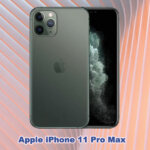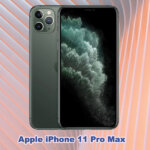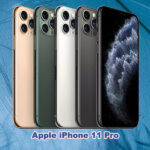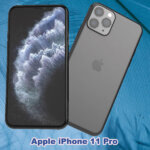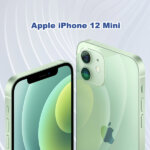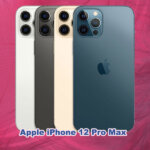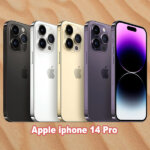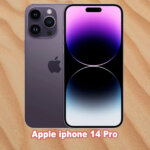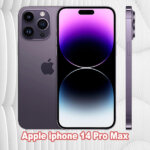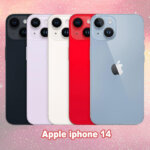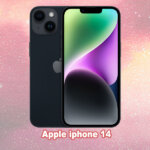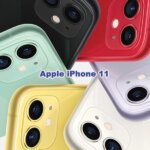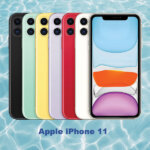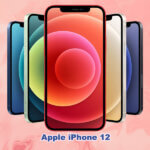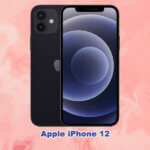Apple iPhone 13 Mobile Phone - Specifications
| Mobile Phone Deals ∇ |
 Apple iPhone 13 Apple iPhone 13 | ||||
64 GB | 64 GB | 64GB | 64 GB | 64 GB |
| 128 GB | x | x | 128 GB | 128 GB |
| 256 GB | 256 GB | 256 GB | 256 GB | 256 GB |
| 512 GB | 512 GB | 512 GB | x | x |
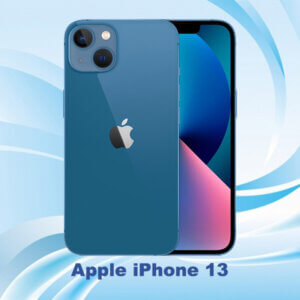 Apple iPhone 13 mini Apple iPhone 13 mini | ||||
| iPhone 12 64 GB | iPhone 12 mini 64 GB | iPhone 12 Pro x | iPhone 12 Pro Max x | iPad Pro 12.9 (2022) |
| 128 GB | 128 GB | 128 GB | 128 GB | iPad Pro 11 (2022) |
| 256 GB | 256 GB | 256 GB | 256 GB | iPad (2022) |
| x | x | 512 GB | 512 GB | iPad Air (2022) |
 Apple iPhone 13 Pro Apple iPhone 13 Pro | ||||
| iPhone 13 128 GB | iPhone 13 mini 128 GB | iPhone 13 Pro 128 GB | 128 GB | iPad mini (2021) |
| 256 GB | 256 GB | 256 GB | 256 GB | iPad 10.2 (2021) |
| 512 GB | 512 GB | 512 GB | 512 GB | iPad Pro 12.9 (2021) |
| x | x | 1 TB | 1 TB | iPad Pro 11 (2021) |
 Apple iPhone 13 Pro Max Apple iPhone 13 Pro Max | ||||
128 GB | iPhone 14 Plus 128 GB | 128 GB | 128 GB | iPad Air (2020) |
| 256 GB | 256 GB | 256 GB | 256 GB | iPad 10.2 (2020) |
| 512 GB | 512 GB | 512 GB | 512 GB | iPad Pro 12.9 (2020) |
| 1 TB | 1 TB | 1 TB | 1 TB | iPad Pro 11 (2020) |
| Model Number: | iPhone 13 |
| Version: | A2633 (International) , A2482 (USA) A2631 (Canada, Japan) , A2634 (China, Hong Kong) |
| Released: | September, 2021 |
| SIM Card Type: | Single or Dual SIM (Nano-SIM ) |
| Network Included: | GSM / CDMA / HSPA / EVDO / LTE / 5G |
| 2G Network SIM 1: | 2G – GSM 850 / 900 / 1800 / 1900 |
| 2G Network SIM 2: | 2G – GSM 850 / 900 / 1800 / 1900 |
| 3G Network: | 3G – HSDPA 850 / 900 / 1700(AWS) / 1900 / 2100 |
| 4G Network: | Yes |
| 5G Network: | Yes |
| Display Type: | OLED Super Retina XDR |
| Resolution (pixels): | 2532 x 1170 – pixel |
| Operating System: | iOS 15, upgradable to iOS 16 |
| Physical Weight: | 173 grams (6.10 ounces) |
| Screen Size: | 6.1 inches |
| Dimension: Height x Width x Depth | 146.7 x 71.5 x 7.65 mm (5.78 x 2.82 x 0.30 inch) |
| RAM: | 4GB RAM |
| Internal Storage Capacity: | 128GB, 256GB, 512GB |
| Front Selfie Camera: | 12MP |
| Back Main Camera: | Dual 12MP camera system: Wide and Ultra Wide cameras |
| Wide: ƒ/1.6 aperture | |
| Ultra Wide: ƒ/2.4 aperture | |
| LED Flash: | Yes, HDR |
| Front Selfie Video: | 4K , 1080p HD video recording at 25 fps, 30 fps or 60 fps |
| Video: | 4K , 1080p HD video recording at 25 fps, 30 fps or 60 fps |
| Hardware Chipset: | Apple A15 Bionic (5 nm) |
| Motherboard CPU: | Hexa-core (2 x 3.23 GHz + 4 x 1.82 GHz) |
| Hardware GPU: | Apple GPU (4-core graphics) |
| Card Slot: | No |
| Loudspeaker: | Yes |
| Headphone Jack: | No |
| Connectivity Wi-Fi: | Wi-Fi 802.11 |
| Wi-Fi hotspot: | Yes |
| Wi-Fi Direct: | |
| Bluetooth: | 5.1, A2DP, LE |
| GPS Capacity with A-GPS, GLONASS, GALILEO, BDS: | Yes |
| NFC: | Yes |
| Infrared Port: | |
| Radio: | No |
| USB port / Type: | USB 2.0, Lightning |
| Fingerprint: | No, Face ID sensors |
| Accelerometer: | Yes |
| Gyro: | Yes |
| Proximity: | Yes |
| Compass: | Yes |
| Battery: | 3240 mAh, non-removable / built in |
| Color Options: | Starlight, Midnight, Blue, Pink, Green |
| Other Features: | Ceramic Shield front, Compatible with MagSafe cases, Water resistant to a depth of 6 metres for up to 30 minutes, Splash, Water and Dust Resistant Rated IP68, Fast charging, MagSafe fast wireless charging. |
The Apple iPhone 13 is a smartphone that was announced in September 2021 and comes in different versions depending on the region and carrier.
| Model : | iPhone 13 | iPhone 13 mini | iPhone 13 Pro | iPhone 13 Pro Max | Memory | iPhone 13 | iPhone 13 mini | iPhone 13 Pro | iPhone 13 Pro Max |
| Display : | 6.1 inches | 5.4 inches | 6.1 inches | 6.7 inches | 128 GB | $850 | $780 | $920 | $1050 |
| Camera : | 12 MP | 12 MP | 12 MP | 12 MP | 256 GB | $950 | $880 | $ 982 | $1150 |
| Battery : | 3240 mAh | 2438 mAh | 3095 mAh | 4352 mAh | 512 GB | $1050 | $989 | $ 1082 | $1200 |
| RAM : | 4 GB | 4 GB | 6 GB | 6 GB | 1 TB | $1150 | $1,089 | $ 1182 | $1250 |
Apple iPhone 13
The new lineup consists of four models: iPhone 13 mini, iPhone 13, iPhone 13 Pro and iPhone 13 Pro Max. The iPhone 13 has a 6.1-inch OLED display with a notch for the Face ID system and a ceramic shield for protection. The iPhone 13 is powered by the Apple A15 Bionic chip with a six-core CPU and a four-core GPU. The iPhone 13 has a dual-camera system on the back with a 12-megapixel wide-angle lens and a 12-megapixel ultra-wide-angle lens, both with optical image stabilization and sensor-shift stabilization. The iPhone 13 also has a 12-megapixel front-facing camera with TrueDepth technology for face recognition and portrait mode. The iPhone 13 supports wireless charging with MagSafe accessories and has an IP68 rating for water and dust resistance. The iPhone 13 runs on iOS 15 and has various features such as Siri, FaceTime, Apple Pay, iMessage, AirDrop, iCloud, and more.
The Apple iPhone 13 is a smartphone that has a sleek and durable design. The body dimensions of the iPhone 13 are 146.7 x 71.5 x 7.7 mm (5.78 x 2.81 x 0.30 in), which makes it easy to hold and use with one hand. The weight of the iPhone 13 is 174 g (6.14 oz), which is slightly heavier than the previous model but still comfortable to carry around. The build of the iPhone 13 consists of a glass front and a glass back, both made of Corning-made glass that is resistant to scratches and cracks. The frame of the iPhone 13 is made of aluminum, which gives it a sturdy and premium feel. The iPhone 13 comes in five different colors: starlight, midnight, blue, pink, green and red.
The Apple iPhone 13 is a smartphone that supports dual eSIMs , which means it can use two eSIMs simultaneously rather than just one eSIM and one nano-SIM. An eSIM is a digital SIM that allows users to activate a mobile plan without having to use a physical SIM card. The iPhone 13 models also have a SIM tray for a nano-SIM card, which is a small physical SIM card that can be inserted into the device. The iPhone 13 models can use either an eSIM and a nano-SIM, or two eSIMs at the same time. This gives users more flexibility and convenience when switching between different network providers or travelling abroad.
The Apple iPhone 13 also has an IP68 rating for dust and water resistance. This means it can withstand dust, dirt and sand, and can be submerged in water up to 6 meters deep for up to 30 minutes without damage. The IP68 rating is based on controlled laboratory conditions and may vary depending on usage and environmental factors. Users should avoid charging the device when wet or exposing it to liquids other than fresh water.
The Apple iPhone 13 is a smartphone that offers different options for internal memory and RAM. Internal memory is the storage space where the phone keeps its data, such as photos, videos, apps and documents. RAM is the memory that the phone uses to run multiple tasks at once, such as switching between apps or browsing the web. The iPhone 13 has four options for internal memory: 128GB, 256GB, 512GB and 1TB. The more internal memory the phone has, the more data it can store without needing to delete or transfer files. The iPhone 13 also has four options for RAM: 4GB, 6GB, 8GB and 12GB. The more RAM the phone has, the faster and smoother it can perform multiple tasks at once without lagging or crashing. The iPhone 13 uses NVMe technology to access its internal memory and RAM. NVMe stands for Non-Volatile Memory Express and it is a protocol that allows faster and more efficient communication between the phone’s processor and its memory. NVMe enables the iPhone 13 to deliver high performance and responsiveness in a compact and sleek design.
| Apple iPhone 13 | US$ (USA) | Canada | Germany | France | Italy | Austria | Netherland | UK | MENA |
| 128GB | $950 | $1000 | €1000 | €1000 | €1000 | €1000 | €1000 | £850 | $950 |
| 256GB | $1000 | $1050 | €1050 | €1050 | €1050 | €1050 | €1050 | £900 | $1000 |
| 512GB | $1050 | $1100 | €1100 | €1100 | €1100 | €1100 | €1100 | £950 | $1050 |
| 1TB | $1100 | $1150 | €1200 | €1200 | €1200 | €1200 | €1200 | £1050 | $1100 |
| iPhone 13 mini | US$ (USA) | Canada | Germany | France | Italy | Austria | Netherland | UK | MENA |
| 128GB | $950 | $1000 | €1000 | €1000 | €1000 | €1000 | €1000 | £850 | $950 |
| 256GB | $1000 | $1050 | €1050 | €1050 | €1050 | €1050 | €1050 | £900 | $1000 |
| 512GB | $1050 | $1100 | €1100 | €1100 | €1100 | €1100 | €1100 | £950 | $1050 |
| 1TB | $1100 | $1150 | €1200 | €1200 | €1200 | €1200 | €1200 | £1050 | $1100 |
| iPhone 13 Pro | US$ (USA) | Canada | Germany | France | Italy | Austria | Netherland | UK | MENA |
| 128GB | $950 | $1000 | €1000 | €1000 | €1000 | €1000 | €1000 | £850 | $950 |
| 256GB | $1000 | $1050 | €1050 | €1050 | €1050 | €1050 | €1050 | £900 | $1000 |
| 512GB | $1050 | $1100 | €1100 | €1100 | €1100 | €1100 | €1100 | £950 | $1050 |
| 1TB | $1100 | $1150 | €1200 | €1200 | €1200 | €1200 | €1200 | £1050 | $1100 |
| iPhone 13 Pro Max | US$ (USA) | Canada | Germany | France | Italy | Austria | Netherland | UK | MENA |
| 128GB | $950 | $1000 | €1000 | €1000 | €1000 | €1000 | €1000 | £850 | $950 |
| 256GB | $1000 | $1050 | €1050 | €1050 | €1050 | €1050 | €1050 | £900 | $1000 |
| 512GB | $1050 | $1100 | €1100 | €1100 | €1100 | €1100 | €1100 | £950 | $1050 |
| 1TB | $1100 | $1150 | €1200 | €1200 | €1200 | €1200 | €1200 | £1050 | $1100 |
Avoid paying Taxes and International postage delay
If you are looking for a new smartphone with cutting-edge features and performance, you might be interested in buying an iPhone 14 or iPhone 14 Plus. These are the latest models of Apple’s flagship device, which offer a stunning design, a powerful A16 chip, a ProMotion display with adaptive refresh rate, a cinematic video mode with Dolby Vision HDR, and an advanced camera system with 3x optical zoom and macro photography.
However, buying an iPhone 14 or iPhone 14 Plus in your country might not be the best option for you. Depending on where you live, you might face some disadvantages such as higher prices due to taxes and tariffs, limited availability due to supply chain issues or delayed launch dates, or compatibility issues due to different network standards or carrier policies.
Therefore, you might want to consider buying an iPhone 14 or iPhone 14 Plus from abroad and use it in your country. This way, you can potentially save money by taking advantage of lower prices in other markets, get your hands on the device sooner by ordering from countries where it is already released, and enjoy more freedom and flexibility by choosing an unlocked model that works with any network provider.
However, before you decide to buy an iPhone 14 or iPhone 14 Plus from abroad and use it in your country, there are some things you need to be aware of. First of all, you need to make sure that the model you buy is compatible with the network bands and frequencies used by your carrier in your country. Second of all, you need to check if there are any import duties or taxes that apply when you bring the device into your country. Third of all, you need to be prepared for possible warranty issues or customer service difficulties if you encounter any problems with your device.
Buying an iPhone 14 or iPhone 14 Plus from abroad and use it in your country can be a smart move if you do your research carefully and weigh the pros and cons. It can help you avoid paying extra taxes and waiting for long delays while enjoying a premium smartphone experience. However, it can also involve some risks and challenges that you need to be ready for. Ultimately, the choice is yours.
Apple iPhone 13 Display type
The display of the Apple iPhone 13 is a Super Retina XDR OLED screen that supports HDR10 and Dolby Vision standards for high dynamic range (HDR) content. HDR content can display a wider range of colors and brightness levels than standard dynamic range (SDR) content, resulting in more realistic and immersive images. The iPhone 13 display has a typical brightness of 800 nits (HBM), which means it can produce up to 800 candelas per square meter of luminance when displaying high-brightness mode (HBM) content. HBM content is usually used for outdoor viewing or in bright environments. The iPhone 13 display can also reach a peak brightness of 1200 nits when displaying HDR content, which means it can produce up to 1200 candelas per square meter of luminance when displaying the brightest parts of an HDR image. This allows the display to show more details in both dark and bright areas of the image.
One of the most noticeable features of the Apple iPhone 13 is its display. The iPhone 13 has a 6.1-inch OLED screen that covers 86.0% of the front surface of the device. The display has a resolution of 1170 x 2532 pixels and a pixel density of 460 ppi, which means it can produce sharp and vivid images and text. The display also supports HDR10 and Dolby Vision for enhanced contrast and color range when watching compatible content. Additionally, the display has a ProMotion technology that can adjust the refresh rate from 10 Hz to 120 Hz depending on the content and battery level. This allows for smoother scrolling, animations and gaming performance while saving power when not needed. The display also has a ceramic shield coating that makes it more resistant to scratches and cracks than previous models.
The display of the Apple iPhone 13 is one of its key features. The display has a resolution of 1170 x 2532 pixels, which means that it can show more than 2.9 million pixels on the screen. The display also has a 19.5:9 aspect ratio, which means that it is slightly taller and narrower than a standard 16:9 screen. This gives the display a more immersive and cinematic feel when watching videos or playing games. The display also has a high pixel density of 460 pixels per inch (ppi), which means that the images and text on the screen are very sharp and clear. The display uses OLED technology, which offers better contrast, colors and brightness than LCD screens.
Ceramic Shield is a new type of glass coating that Apple introduced with the iPhone 13 and iPhone 12 series. It is made by infusing nano-ceramic crystals into the glass matrix, which increases its hardness and durability. According to Apple, Ceramic Shield offers four times better drop resistance than previous iPhones, while maintaining clear optical performance and scratch resistance . However, Ceramic Shield is not invincible and can still crack or shatter under extreme impact or pressure. Therefore, some users may prefer to add an extra layer of protection with a screen protector, especially a tempered glass one that can absorb some of the shock and prevent damage to the display. Screen protectors are widely available online and in stores, and they vary in price, quality and features .
Apple iPhone 13 Version
The iPhone 13 comes in different versions depending on the region and carrier compatibility. The A2633 version is the international model that supports GSM, CDMA, HSPA, EVDO, LTE, and 5G networks. The A2482 version is the USA model that supports GSM, CDMA, HSPA, EVDO, LTE, and 5G networks as well as mmWave technology for faster data speeds. The A2631 version is the Canada and Japan model that supports GSM, CDMA, HSPA, EVDO, LTE, and 5G networks but does not support mmWave technology. The A2634 version is the China and Hong Kong model that supports GSM, CDMA (China only), HSPA (Hong Kong only), EVDO (Hong Kong only), LTE (China only), and NR (China only) networks but does not support mmWave technology or FaceTime over cellular. The A2635 version is the Russia model that supports GSM (Russia only), CDMA (Russia only), HSPA (Russia only), EVDO (Russia only), LTE (Russia only), NR NSA/SA Sub-6 GHz networks but does not support mmWave technology or FaceTime over cellular.
Apple iPhone 13 back main camera
The Apple iPhone 13 has a dual camera system on the back that consists of two 12 MP sensors. The main camera has a wide-angle lens with a 26 mm focal length equivalent and an f/1.6 aperture. It also features dual pixel phase detection autofocus (PDAF) and sensor-shift optical image stabilization (OIS), which helps reduce blur and shake in photos and videos. The second camera has an ultra-wide-angle lens with a 120° field of view and a 13 mm focal length equivalent. It has an f/2.4 aperture and fixed focus . The iPhone 13’s back cameras can capture stunning images and videos in various lighting conditions, thanks to features like HDR, True Tone, Wide color, Night mode, Cinematic mode and more.
The Apple iPhone 13 back main camera is a dual-camera system that consists of a 12 MP wide-angle lens and a 12 MP telephoto lens. The wide-angle lens has an aperture of f/1.6 and optical image stabilization (OIS), while the telephoto lens has an aperture of f/2.8 and 2x optical zoom. The camera also features a dual-LED dual-tone flash that provides balanced lighting for photos and videos in different environments. Additionally, the camera supports HDR (high dynamic range) mode for both photo and panorama modes, which enhances the contrast and color range of the images by capturing multiple exposures and combining them into one optimal result.
The Apple iPhone 13 back main camera is a powerful device that can capture stunning videos in various resolutions and frame rates. The camera can record 4K videos at 24, 30 or 60 frames per second (fps), which offer high definition and smooth motion. The camera can also record 1080p videos at 30, 60, 120 or 240 fps, which offer lower resolution but faster frame rates for slow-motion effects. The camera supports HDR (high dynamic range) and Dolby Vision HDR (up to 60 fps), which enhance the contrast and color range of the videos. The camera also has stereo sound recording, which provides clear and immersive audio quality.
Apple iPhone 13 front selfie camera
The Apple iPhone 13 features a front selfie camera that has a single 12 MP lens with an aperture of f/2.2 and a focal length of 23mm (wide). This camera can capture high-resolution images and videos with a wide-angle view and natural colors. The camera also has a SL 3D sensor that can measure the depth and distance of objects in the scene and enable biometric functions such as Face ID and Animoji. The camera also supports HDR (high dynamic range) mode that can balance the exposure and contrast of different areas in the image and produce more detailed and realistic results.
The Apple iPhone 13 has a front selfie camera that can record high-quality videos in different resolutions and frame rates. The camera supports 4K video recording at 24, 25, 30 or 60 frames per second (fps), which means that it can capture four times more detail than full HD (1080p) videos. The camera also supports 1080p video recording at 30, 60 or 120 fps, which offers smoother motion and sharper images. Additionally, the camera has a gyro-EIS feature, which stands for gyroscopic electronic image stabilization. This feature uses the built-in gyroscope sensor to detect and compensate for any unwanted camera shake or movement, resulting in more stable and smooth videos.
Apple iPhone 13 CPU and GPU
The Apple iPhone 14 Pro it features a powerful processor and graphics unit that deliver fast performance and stunning visuals. The processor is the Apple A16 Bionic chip, which is based on a 4 nm process and has six cores: two high-performance cores called Everest that run at 3.46 GHz and four high-efficiency cores called Sawtooth that run at 2.02 GHz . The graphics unit is the Apple GPU, which has five cores and supports advanced features such as ray tracing and variable rate shading . The combination of the CPU and GPU enables the iPhone 14 Pro to handle demanding tasks such as gaming, video editing, augmented reality, and machine learning with ease.
The iPhone 14 Pro is a flagship smartphone from Apple that features a powerful and efficient processor and graphics unit. The iPhone 14 Pro has an A16 chip, which is a six-core CPU with two high-performance cores and four high-efficiency cores . The A16 chip also has a five-core GPU that delivers up to 25-30% faster graphics performance than the A15 chip in the iPhone 13 Pro. The A16 chip also has a 16-core Neural Engine that can perform up to 15.8 trillion operations per second for advanced machine learning tasks.
The iPhone 14 Pro also has a memory bandwidth of up to 50% higher than the iPhone 13 Pro, which allows for faster data transfer between the CPU, GPU and RAM. The iPhone 14 Pro is designed to handle intensive tasks such as gaming, video editing, augmented reality and photography with ease and efficiency.
The Apple iPhone 13 is a smartphone that runs on iOS 15, the latest operating system from Apple. iOS 15 offers many new features and improvements, such as FaceTime enhancements, Focus mode, Live Text, Safari redesign and more. The iPhone 13 can also be upgraded to iOS 16.3 when it becomes available in the future. iOS 16.3 is expected to bring more security updates and bug fixes to the iPhone 13. The iPhone 13 platform is powered by the Apple A15 Bionic chip, which is a hexa-core processor with two performance cores and four efficiency cores. The A15 Bionic chip also has a quad-core graphics unit and a 16-core neural engine for machine learning tasks. The iPhone 13 platform delivers fast performance and smooth multitasking for various apps and games on the device.
The Apple iPhone 13 is powered by the Apple A15 Bionic chipset, which is a 5-nanometer (nm) system-on-a-chip (SoC) that integrates the CPU, GPU, Neural Engine and other components. The A15 Bionic is designed to deliver fast performance, smooth graphics and advanced machine learning capabilities for the iPhone 13. The CPU consists of six cores: two high-performance cores and four high-efficiency cores. The GPU has four cores that support up to 30% faster graphics than the previous generation. The Neural Engine has 16 cores that can perform up to 15.8 trillion operations per second for tasks such as face recognition, natural language processing and augmented reality. The A15 Bionic also features a new display engine that enables ProMotion technology on the iPhone 13 Pro models, which dynamically adjusts the refresh rate from 10Hz to 120Hz depending on the content. Additionally, the A15 Bionic supports 5G connectivity, Wi-Fi 6E and Bluetooth 5.0.
The Apple iPhone 13 is powered by a hexa-core processor that consists of two high-performance cores and four high-efficiency cores. The high-performance cores are called Avalanche and run at a clock speed of 3.23 GHz, while the high-efficiency cores are called Blizzard and run at a clock speed of 1.82 GHz. The hexa-core processor is designed to balance performance and power consumption, depending on the tasks that the iPhone 13 is performing. For example, when playing games or editing videos, the iPhone 13 will use the Avalanche cores to deliver fast and smooth performance. When browsing the web or checking emails, the iPhone 13 will use the Blizzard cores to save battery life and reduce heat generation. The hexa-core processor is part of the Apple A15 Bionic chip that also includes a quad-core GPU, a 16-core Neural Engine and a new image signal processor.
One of the key components of this device is its platform, which consists of the Apple A15 Bionic chip and the Apple GPU (4-core graphics). The Apple GPU (4-core graphics) is an integrated graphics unit that handles the rendering of images, videos, games and other visual content on the iPhone 13. According to Apple, this GPU offers up to 30% faster performance than “the competition”, which presumably refers to other flagship Android smartphones with similar specifications. However, compared to the iPhone 13 Pro and Pro Max models, which have a 5-core GPU variant of the A15 Bionic chip, the iPhone 13’s GPU performance is significantly lower . This means that gamers who want to enjoy the best graphics quality and frame rates on their iPhones may want to skip the iPhone 13 and go for the Pro models instead.
Apple iPhone 13 sensors
The Apple iPhone 13 has a variety of sensors that enable different features and functions. One of the most prominent sensors is Face ID, which uses a TrueDepth camera system to scan the user’s face and unlock the device, authenticate payments, and access secure apps. Face ID also supports Animoji and Memoji, which are animated characters that mimic the user’s facial expressions.
Another sensor on the iPhone 13 is the accelerometer, which measures the acceleration and orientation of the device. The accelerometer allows the device to detect when it is tilted, shaken, or rotated, and adjust the screen accordingly. The accelerometer also enables motion-based games and apps that use gestures.
The gyro sensor on the iPhone 13 works together with the accelerometer to provide more accurate motion detection. The gyro sensor measures the angular velocity of the device, which means how fast it is spinning around an axis. The gyro sensor helps to stabilize images and videos taken with the camera, as well as improve navigation and augmented reality experiences.
The proximity sensor on the iPhone 13 detects how close the device is to an object or a person’s face. The proximity sensor turns off the display and disables touch input when the device is held near the ear during a call or when placed in a pocket or a bag. This helps to save battery life and prevent accidental touches.
The compass sensor on the iPhone 13 determines the direction that the device is facing relative to magnetic north. The compass sensor works with GPS and cellular networks to provide location-based services such as maps, directions, weather, and local search. The compass sensor also allows users to see their orientation in augmented reality apps.
The barometer sensor on the iPhone 13 measures air pressure and altitude changes. The barometer sensor helps to improve GPS accuracy and provide more precise elevation data for fitness tracking apps such as Health and Workout. The barometer sensor can also detect weather changes such as storms or high winds.
The Ultra Wideband (UWB) support on the iPhone 13 enables spatial awareness and precise location tracking with compatible devices such as AirTags, HomePod mini, Apple Watch Series 6/7/SE/Nike+, AirPods Pro/Max/3rd generation etc.. UWB uses radio waves to measure distance and direction between devices with high accuracy and low latency. UWB can also enable features such as unlocking cars or doors with digital keys.
Apple iPhone 13 Battery
The Apple iPhone 13 has a built-in non-removable battery type of Li-Ion 3240 mAh, which means it uses lithium-ion technology to store electric charge. The mAh stands for milliampere hour, which is a unit of electric charge that indicates how much current the battery can provide for one hour. The higher the mAh, the longer the battery life. The iPhone 13’s battery has a capacity of 3240 mAh, which is slightly higher than the iPhone 12’s battery of 2815 mAh. This means that the iPhone 13 can last longer on a single charge than its predecessor. However, the actual battery life depends on various factors such as usage patterns, settings and environmental conditions. The iPhone 13’s battery is also non-removable, which means it is built into the device and cannot be easily replaced by the user. This design choice helps to make the device more compact and water-resistant, but also limits the options for repairing or upgrading the battery. The iPhone 13’s battery has a power rating of 12.41 Wh, which stands for watt hour. This is another unit of electric energy that indicates how much power the battery can deliver for one hour. The higher the Wh, the more energy the battery can store. The iPhone 13’s battery has a slightly lower power rating than some of its competitors such as Samsung Galaxy S21 (15 Wh) or OnePlus 9 (16 Wh), but this does not necessarily mean that it has worse performance or efficiency. The power rating depends on both the voltage and capacity of the battery, and different devices may have different voltage requirements and consumption levels.
Apple iPhone 13 Charging wired / wireless
The Apple iPhone 13 is a smartphone that features a fast-charging battery that can be recharged using a wired or wireless method. According to Apple, the iPhone 13 can get up to 50% charge in 30 minutes when using a wired charger with a 20W or higher adapter that is sold separately. This is possible because the iPhone 13 supports PD2.0, which is a protocol for power delivery that allows for higher voltage and current levels than standard USB chargers.
The Apple iPhone 13 supports wireless charging using a technology called MagSafe. MagSafe is a system of magnets that aligns the iPhone with compatible accessories, such as chargers, battery packs and cases. MagSafe allows for faster and more efficient wireless charging than standard Qi chargers .
One of the main MagSafe accessories is the MagSafe Charger, which is a circular device that attaches to the back of the iPhone 13 and delivers up to 15W of power when paired with a 20W or higher power adapter . The MagSafe Charger can also charge other Qi-compatible devices, such as older iPhones and AirPods, but at a lower speed of 7.5W.
Another MagSafe accessory is the MagSafe Battery Pack, which is a portable device that snaps onto the back of the iPhone 13 and provides extra battery life. The MagSafe Battery Pack can charge the iPhone with up to 15W of power when plugged into a wall outlet, or with up to 5W of power when used on-the-go . The MagSafe Battery Pack can also be charged by placing it on top of a Qi charger or by connecting it to an iPhone that is plugged into a power source.
The Apple iPhone 13 is a smartphone that supports wireless charging using the Qi standard. Qi is an open, universal charging standard created by the Wireless Power Consortium (WPC) that allows for an easy and intuitive charging experience . The iPhone 13 works with Qi-certified chargers that are available as accessories and in cars, cafes, hotels, airports and furniture . However, the iPhone 13 has the same wireless charging speeds as the iPhone 12, which means that it can only charge at a maximum of 7.5W using a Qi-enabled device and 15W using an Apple MagSafe charger or a third-party MagSafe charging accessory approved by Apple . This means that wireless charging may not be as fast as wired charging for the iPhone 13. Some users have reported that certain Qi chargers have been capped to 5W instead of 7.5W after updating to iOS 13.1, which may affect the wireless charging performance of the iPhone 13 as well.
Trademark Disclaimer:
All trademarks, logos, and brand names are the property of their respective owners. All company, product, and service names used in this website are for identification purposes only. Use of these names trademarks, and brands do not imply endorsement.
Apple iPhone 11, Apple iPhone 11 Pro, Apple iPhone 11 Pro Max, Apple iPhone 12, Apple iPhone 12 mini, Apple iPhone 12 Pro, Apple iPhone 12 Pro Max, Apple iPhone 13 Mini, Apple iPhone 13 Pro, Apple iPhone 13 Pro Max, Apple iPhone 14, Apple iPhone 14 Plus, Apple iPhone 14 Pro, Apple iPhone 14 Pro Max, Apple iPhone 15, Apple iPhone 15Plus, Apple iPhone 15 Pro, Apple iPhone 15 Pro Max, Apple iPhone SE 2020, Apple iPhone SE 2022, Apple iPhone 16,




